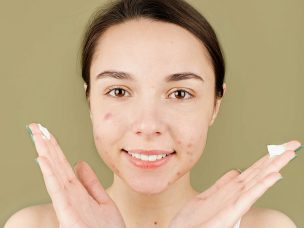Atopic dermatitis
Tralokinumab Improves Skin Microbiota Diversity in Adults With Atopic Dermatitis
Tralokinumab treatment produces beneficial changes in skin microbiota, such as increasing microbial diversity, decreasing Staphylococcus aureus (S.aureus) abundance, and increasing the abundance of commensal coagulase-negative Staphylococci. Atopic dermatitis (AD) is a chronic skin condition that can cause discomfort, itching, and a reduced quality of life. Research suggests that individuals with atopic dermatitis have less diverse...
Upadacitinib’s Effectiveness and Safety in Atopic Dermatitis
According to this real-life retrospective analysis, upadacitinib appears to be a useful and safe treatment option for individuals with severe atopic dermatitis who have not responded well to previous systemic therapies. Atopic dermatitis (AD) is a chronic, relapsing skin condition affecting millions worldwide. Despite the availability of various treatment options, a significant proportion of patients...
Caring for a Child With Atopic Dermatitis
Learn the importance of working closely with healthcare professionals to develop a tailored treatment plan and explore additional tips for providing your child with the best possible care. With the right approach, you can support your child’s well-being and help them lead a happy, healthy life. Atopic dermatitis is a common skin condition in children...
The Connection Between Atopic Dermatitis and Allergies
Delve into the complexities of atopic dermatitis and allergies, learn about the atopic march, and understand the importance of managing both conditions effectively. Armed with this knowledge, you’ll be better prepared to work with healthcare professionals in developing personalized treatment plans to alleviate symptoms and improve your quality of life. Atopic dermatitis (AD), also known...
Discovering Cutaneous Biomarkers for the Prediction of Atopic Dermatitis
The onset of atopic dermatitis in infants is difficult to predict, but this study shows that a high degree of accuracy can be achieved with the use of cutaneous biomarkers. Predictive biomarkers that relate to pediatric atopic dermatitis (AD) are currently not well understood. This study, published in the journal Allergy, analyzed biomarkers related to...
Atopic Dermatitis Disparities Persist Globally
Atopic dermatitis shows disparate results both internationally and, within most nations, across racial and economic lines, as this new large-scale meta-analysis shows. Atopic dermatitis (AD) affects both adult and pediatric populations around the world, and although we have made progress in understanding what causes it, there are still disparities throughout the world in how the...
Effectiveness of a Natural Cosmetic Product in Managing Eyelid Atopic Dermatitis
Natural cosmetic products improve the objective and subjective aspects of atopic dermatitis and enhance patients’ quality of life. Atopic dermatitis (AD) is a chronic and inflammatory skin disease that affects up to 20% of children and 5% of adults. Its main symptom is itching, which can lead to sleep disturbances and behavioral problems. Eyelids are...
Breaking the Itch–Scratch Cycle
Discover effective ways to break the itch–scratch cycle associated with atopic dermatitis. Find out how incorporating additional strategies, such as wearing soft clothing, keeping nails short, and practicing good hygiene, can help break the cycle. Atopic dermatitis can cause itchy, red skin patches, which can lead to an itch–scratch cycle. Strategies like wearing soft clothing,...
Antimicrobial Peptides and Tight Junction Barrier Function in Atopic Dermatitis
The antimicrobial peptide derived from insulin-like growth factor-binding protein 5 seems to play a role in the pathogenesis of atopic dermatitis, but additional research is required to understand how it can be used for novel therapies. The antimicrobial peptide derived from insulin-like growth factor-binding protein 5 (AMP-IBP5) can be used to derive an antimicrobial peptide...
More Medical News














